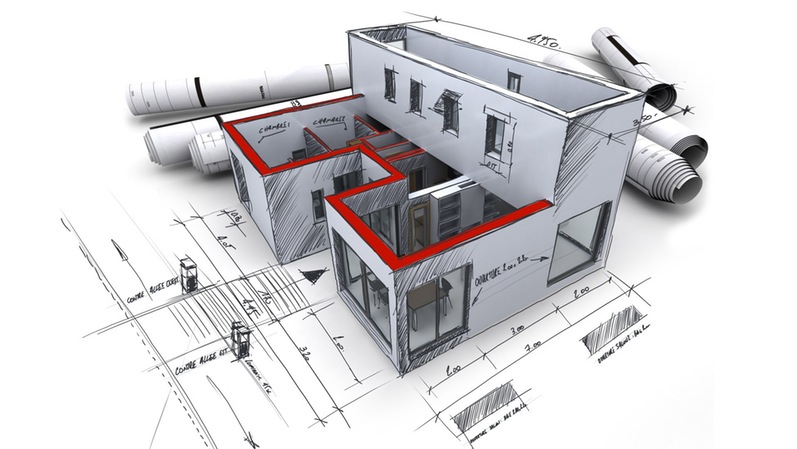Transforming Rooms: The Vision of CDA Architects for Modern Living
Transforming Rooms: The Vision of CDA Architects for Modern Living
Blog Article
An Extensive Summary of Architectural Styles and Their Impact on Modern City Preparation and Development
Building styles have actually long served as a mirror to the societal worths and technological innovations of their time, playing a critical function in shaping modern-day city planning and growth. From the splendour of Neoclassicism to the practical technique of Brutalism, each style has actually introduced special principles that affect metropolitan visual appeals and capability.
Historic Summary of Building Designs
Throughout history, architectural designs have evolved in action to cultural, technological, and ecological elements. Each duration mirrors the prevailing values, ideas, and advancements of its time, causing an abundant tapestry of style that symbolizes human creative thinking and adaptation. The ancient human beings, such as the Egyptians and Greeks, developed foundational designs that emphasized proportion and percentage, offering both functional and aesthetic functions.
As cultures transitioned through the Center Ages, Gothic architecture arised, defined by its verticality and elaborate outlining, matching the spiritual desires of the age. The Renaissance noted a resurgence of classical suitables, combining art and design in cutting-edge manner ins which influenced subsequent styles across Europe.
The Industrial Revolution introduced new materials and building and construction techniques, motivating activities like Innovation, which tested typical kinds and welcomed simplicity and performance. The 20th century saw a diversity of designs, with Postmodernism reacting against the raw minimalism of its predecessor, incorporating historical references and diverse aspects.
Today, building designs remain to develop, driven by globalization and sustainability worries, showing a vibrant interaction in between heritage and innovation. This historic review emphasizes the value of design as a mirror of societal evolution and as a catalyst for city development.
Key Architectural Styles Explained
The variety of building styles shows the myriad impacts that form our built atmosphere, each personifying unique attributes and cultural values. Trick building designs consist of Classical, Gothic, Baroque, Innovation, and Postmodernism, each representing unique historic contexts and visual viewpoints.
Classical style, rooted in old Greece and Rome, emphasizes balance, percentage, and using columns. On the other hand, Gothic architecture, thriving between Ages, is identified by pointed arches, ribbed safes, and flying buttresses, producing an angelic high quality in basilicas. Baroque architecture, arising in the 17th century, is marked by magnificence, elaborate decoration, and a vibrant interplay of light and darkness.

Comprehending these designs supplies insight into the cultural narratives and technological improvements of their corresponding eras, highlighting how architecture offers not equally as a sanctuary, however as a reflection of social values and aspirations.
Influence On Urban Preparation
In forming the development of cities, building styles significantly influence city preparation decisions. The selection of architectural design frequently determines the appearances, performance, and total character of metropolitan settings.
Furthermore, building styles can influence zoning regulations and land use policies. Urban coordinators have to consider the dominating building trends when creating areas, guaranteeing that new advancements integrate with existing structures. This consideration cultivates natural urban landscapes and improves neighborhood identification.
The implementation of certain building designs can additionally influence socioeconomic elements within a city. High-end contemporary designs might draw in wealthy locals and organizations, leading to gentrification, while more cost effective real estate remedies could focus on practical and lasting layouts to fit varied populaces. Inevitably, the interaction between architectural styles and urban planning develops vibrant cities that show both historical context and contemporary needs, shaping the lived experiences of their inhabitants.
Sustainability and Modern Architecture
Building designs play an essential function in resolving modern difficulties, particularly in the realm of sustainability. As urban locations broaden and environmental concerns intensify, modern-day style progressively embraces lasting layout principles that prioritize power effectiveness, source conservation, and minimal environmental impact.
Contemporary architectural motions, such as biophilic style and green style, supporter for structures that integrate with their environments, Go Here utilizing all-natural materials and advertising biodiversity - cda architects. These styles frequently include renewable resource sources, such as photovoltaic panels and wind turbines, to reduce dependence on fossil fuels and reduced carbon footprints
Additionally, the integration of innovative technologies, such as clever structure systems, enhances energy administration, optimizing source use while making sure occupant comfort. Cutting-edge water management methods, including rainwater harvesting and greywater recycling, more add to sustainable city environments.
Especially, sustainability extends past environmental worries; it incorporates social and financial dimensions also. By fostering neighborhood wellness and promoting inclusivity, contemporary building designs align with sustainable advancement objectives. The advancement of building techniques continues to form durable cities that not only fulfill the needs of the present however additionally protect the future for generations to come.
Community Involvement in Layout
Neighborhood engagement in style works as a crucial bridge between architects and the populaces they offer, making certain that the built setting mirrors the demands and ambitions of its individuals. This joint procedure invites see page community members to contribute their understandings and preferences, cultivating a sense of possession and responsibility towards the rooms they occupy.
Effective neighborhood engagement employs various approaches, such as workshops, studies, and public forums, to gather varied perspectives (cda architects). These strategies assist in a two-way dialogue, allowing designers to recognize regional contexts while encouraging locals to voice their issues and wishes. This inclusivity not only enhances the style high quality yet additionally promotes social equity by attending to the distinct difficulties dealt with by marginalized groups

Final Thought
Architectural designs have actually greatly affected modern-day city planning and growth, mirroring developing cultural and technical contexts. The integration of historic aesthetics with contemporary demands promotes city atmospheres that focus on sustainability and community involvement. As cities remain to grow and adapt, the continuous discussion in between architectural heritage and contemporary layout concepts will remain necessary his response in creating comprehensive, vivid spaces that improve top quality of life and promote social equity. The future of city development hinges on this harmonious balance.
Report this page